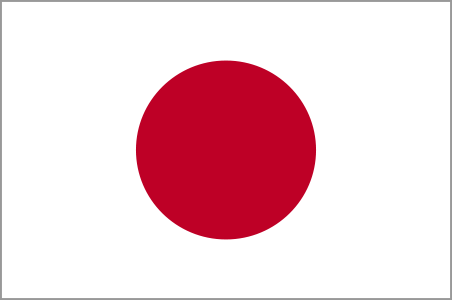- 메일 주소 : David@tmaxcn.com
- 메일 주소 : Davidtmaxcn@gmail.com
- : No. 39, Xinchang Road, Xinyang, Haicang Dist., Xiamen, Fujian, China (Mainland)
블로그
Cell Sorting Machine
A cell sorting machine, also known as a flow cytometer with cell sorting capabilities, is an advanced instrument used to analyze and separate cells based on their physical and biochemical properties. This technology plays a critical role in biomedical research, clinical diagnostics, and therapeutic development by enabling the isolation of specific cell populations for further study or application.
In this article, we will explore the design, operation, advantages, challenges, and applications of cell sorting machines.
●Design and Operation of Cell Sorting Machines
1. Key Components
Flow Cytometer: The core component that analyzes cells as they pass through a laser beam.
Sorting System: Uses electric charges or mechanical forces to direct specific cells into collection tubes or plates.
Laser Source: Emits light to excite fluorescent markers attached to target cells.
Detectors: Measure scattered light and fluorescence emitted by cells.
Software: Controls the system and processes data for analysis.
2. Operation Principle
Cells are suspended in a fluid stream and passed through a narrow channel where they are illuminated by a laser.
Fluorescent markers bound to specific cell components emit light at characteristic wavelengths when excited by the laser.
Detectors measure the scattered light and fluorescence signals to identify cell characteristics.
Based on these measurements, the sorting system separates target cells from the rest of the population.
●Functionalities of Cell Sorting Machines
1. Cell Analysis:
Measures multiple parameters such as size, shape, granularity, and expression levels of specific markers.
2. Cell Sorting:
Isolates specific cell populations based on predefined criteria (e.g., marker expression).
3. HighThroughput Processing:
Analyzes and sorts thousands of cells per second.
4. Multiparametric Analysis:
Simultaneously evaluates multiple characteristics of individual cells using different fluorophores.
●Advantages of Cell Sorting Machines
1. Precision:
Accurately identifies and isolates rare cell populations, such as circulating tumor cells or stem cells.
2. Versatility:
Compatible with a wide range of cell types and markers.
3. Speed:
Processes large numbers of cells quickly, making it ideal for highthroughput applications.
4. Automation:
Modern systems offer automated workflows, reducing manual intervention and increasing reproducibility.
5. Data Richness:
Provides detailed information about individual cells, enabling deeper insights into cellular heterogeneity.
●Challenges in Using Cell Sorting Machines
1. Complexity:
Requires specialized training to operate and interpret results effectively.
2. Cost:
High initial investment and maintenance costs can be prohibitive for smaller labs.
3. Sample Preparation:
Cells must be carefully prepared to ensure viability and accurate labeling.
4. Contamination Risk:
Crosscontamination between samples can occur if proper sterilization protocols are not .
5. Limited Viability:
Some sorting methods may damage or stress cells, affecting their functionality postsorting.
To address these challenges and enhance performance, manufacturers are incorporating cuttingedge technologies:
1. Improved Sensitivity:
Advanced detectors and lasers enable detection of faint signals from rare cell populations.
2. Gentle Sorting Techniques:
Technologies like acoustic focusing reduce shear stress on cells during sorting.
3. SingleCell Analysis:
Integration with microfluidics allows for precise manipulation and analysis of single cells.
4. Automation and AI:
Machine learning algorithms optimize sorting parameters and streamline workflows.
5. Portable Devices:
Miniaturized versions of cell sorters are being developed for pointofcare applications.
●Applications of Cell Sorting Machines
Cell sorting machines are used across various fields, including:
1. Cancer Research:
Identification and isolation of cancer stem cells or circulating tumor cells for diagnostic and therapeutic studies.
2. Immunology:
Characterization of immune cell subsets and their functional states in health and disease.
3. Stem Cell Biology:
Isolation of pluripotent or tissuespecific stem cells for regenerative medicine.
4. Microbiology:
Sorting bacterial or viral particles for genomic and functional studies.
5. Clinical Diagnostics:
Detection of biomarkers for early diagnosis of diseases such as leukemia or autoimmune disorders.
●The Future of Cell Sorting Machines
As biotechnology continues to advance, cell sorting machines will become even more powerful and accessible. Key trends shaping the future include:
1. Increased Automation:
Fully autonomous systems will reduce human intervention and improve consistency.
2. Customization Options:
Modular designs will allow users to tailor machines for specific applications or sample types.
3. Focus on Viability:
Gentle sorting techniques will ensure higher cell viability for downstream applications.
4. Integration with Emerging Technologies:
Combination with CRISPR, singlecell sequencing, and artificial intelligence will unlock new possibilities in cell biology.
5. PointofCare Solutions:
Development of compact, userfriendly devices for bedside diagnostics and personalized medicine.
●Conclusion
Cell sorting machines are indispensable tools in modern biomedical research and diagnostics, enabling precise analysis and isolation of specific cell populations. Their ability to provide detailed insights into cellular heterogeneity makes them essential for advancing our understanding of complex biological systems and developing innovative therapies.
November 18,2025.
Xiamen Tmax Battery Equipments Limited was set up as a manufacturer in 1995, dealing with lithium battery equipments, technology, etc. We have total manufacturing facilities of around 200000 square foot and more than 230 staff. Owning a group of experie-nced engineers and staffs, we can bring you not only reliable products and technology, but also excellent services and real value you will expect and enjoy.
A cell sorting machine, also known as a flow cytometer with cell sorting capabilities, is an advanced instrument used to analyze and separate cells based on their physical and biochemical properties. This technology plays a critical role in biomedical research, clinical diagnostics, and therapeutic development by enabling the isolation of specific cell populations for further study or application.
In this article, we will explore the design, operation, advantages, challenges, and applications of cell sorting machines.
●Design and Operation of Cell Sorting Machines
1. Key Components
Flow Cytometer: The core component that analyzes cells as they pass through a laser beam.
Sorting System: Uses electric charges or mechanical forces to direct specific cells into collection tubes or plates.
Laser Source: Emits light to excite fluorescent markers attached to target cells.
Detectors: Measure scattered light and fluorescence emitted by cells.
Software: Controls the system and processes data for analysis.
2. Operation Principle
Cells are suspended in a fluid stream and passed through a narrow channel where they are illuminated by a laser.
Fluorescent markers bound to specific cell components emit light at characteristic wavelengths when excited by the laser.
Detectors measure the scattered light and fluorescence signals to identify cell characteristics.
Based on these measurements, the sorting system separates target cells from the rest of the population.
●Functionalities of Cell Sorting Machines
1. Cell Analysis:
Measures multiple parameters such as size, shape, granularity, and expression levels of specific markers.
2. Cell Sorting:
Isolates specific cell populations based on predefined criteria (e.g., marker expression).
3. HighThroughput Processing:
Analyzes and sorts thousands of cells per second.
4. Multiparametric Analysis:
Simultaneously evaluates multiple characteristics of individual cells using different fluorophores.
●Advantages of Cell Sorting Machines
1. Precision:
Accurately identifies and isolates rare cell populations, such as circulating tumor cells or stem cells.
2. Versatility:
Compatible with a wide range of cell types and markers.
3. Speed:
Processes large numbers of cells quickly, making it ideal for highthroughput applications.
4. Automation:
Modern systems offer automated workflows, reducing manual intervention and increasing reproducibility.
5. Data Richness:
Provides detailed information about individual cells, enabling deeper insights into cellular heterogeneity.
●Challenges in Using Cell Sorting Machines
1. Complexity:
Requires specialized training to operate and interpret results effectively.
2. Cost:
High initial investment and maintenance costs can be prohibitive for smaller labs.
3. Sample Preparation:
Cells must be carefully prepared to ensure viability and accurate labeling.
4. Contamination Risk:
Crosscontamination between samples can occur if proper sterilization protocols are not .
5. Limited Viability:
Some sorting methods may damage or stress cells, affecting their functionality postsorting.
To address these challenges and enhance performance, manufacturers are incorporating cuttingedge technologies:
1. Improved Sensitivity:
Advanced detectors and lasers enable detection of faint signals from rare cell populations.
2. Gentle Sorting Techniques:
Technologies like acoustic focusing reduce shear stress on cells during sorting.
3. SingleCell Analysis:
Integration with microfluidics allows for precise manipulation and analysis of single cells.
4. Automation and AI:
Machine learning algorithms optimize sorting parameters and streamline workflows.
5. Portable Devices:
Miniaturized versions of cell sorters are being developed for pointofcare applications.
●Applications of Cell Sorting Machines
Cell sorting machines are used across various fields, including:
1. Cancer Research:
Identification and isolation of cancer stem cells or circulating tumor cells for diagnostic and therapeutic studies.
2. Immunology:
Characterization of immune cell subsets and their functional states in health and disease.
3. Stem Cell Biology:
Isolation of pluripotent or tissuespecific stem cells for regenerative medicine.
4. Microbiology:
Sorting bacterial or viral particles for genomic and functional studies.
5. Clinical Diagnostics:
Detection of biomarkers for early diagnosis of diseases such as leukemia or autoimmune disorders.
●The Future of Cell Sorting Machines
As biotechnology continues to advance, cell sorting machines will become even more powerful and accessible. Key trends shaping the future include:
1. Increased Automation:
Fully autonomous systems will reduce human intervention and improve consistency.
2. Customization Options:
Modular designs will allow users to tailor machines for specific applications or sample types.
3. Focus on Viability:
Gentle sorting techniques will ensure higher cell viability for downstream applications.
4. Integration with Emerging Technologies:
Combination with CRISPR, singlecell sequencing, and artificial intelligence will unlock new possibilities in cell biology.
5. PointofCare Solutions:
Development of compact, userfriendly devices for bedside diagnostics and personalized medicine.
●Conclusion
Cell sorting machines are indispensable tools in modern biomedical research and diagnostics, enabling precise analysis and isolation of specific cell populations. Their ability to provide detailed insights into cellular heterogeneity makes them essential for advancing our understanding of complex biological systems and developing innovative therapies.
What excites you most about the role of cell sorting machines in advancing life sciences? Share your thoughts below! Together, let’s explore how these powerful tools can shape the future of healthcare and biotechnology.
 ru
ru English
English











 +86 13174506016
+86 13174506016 David@tmaxcn.com
David@tmaxcn.com

